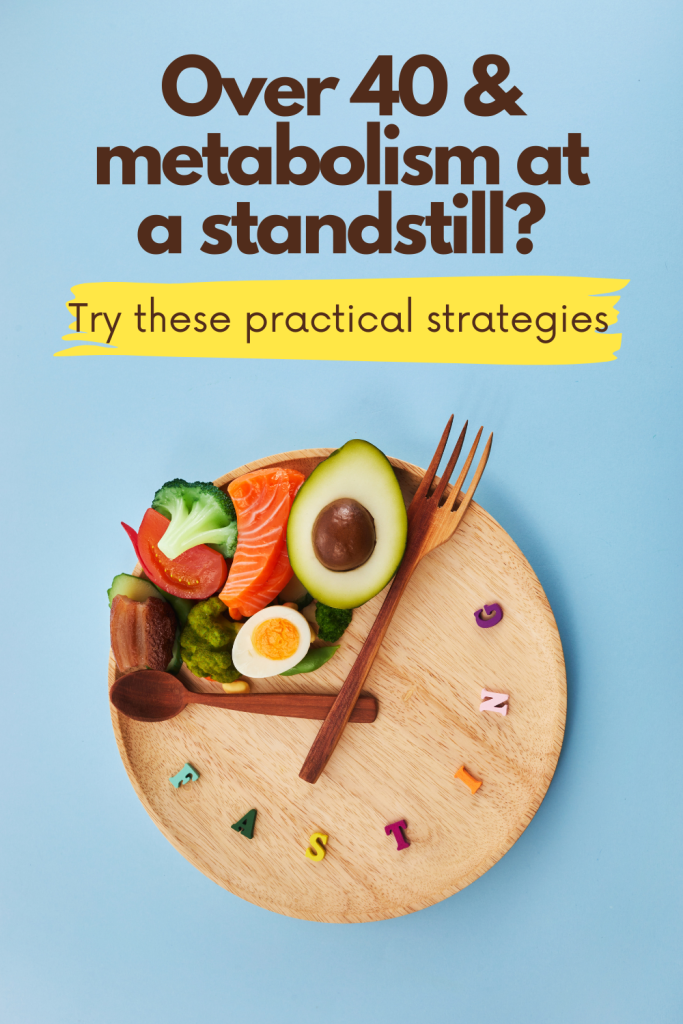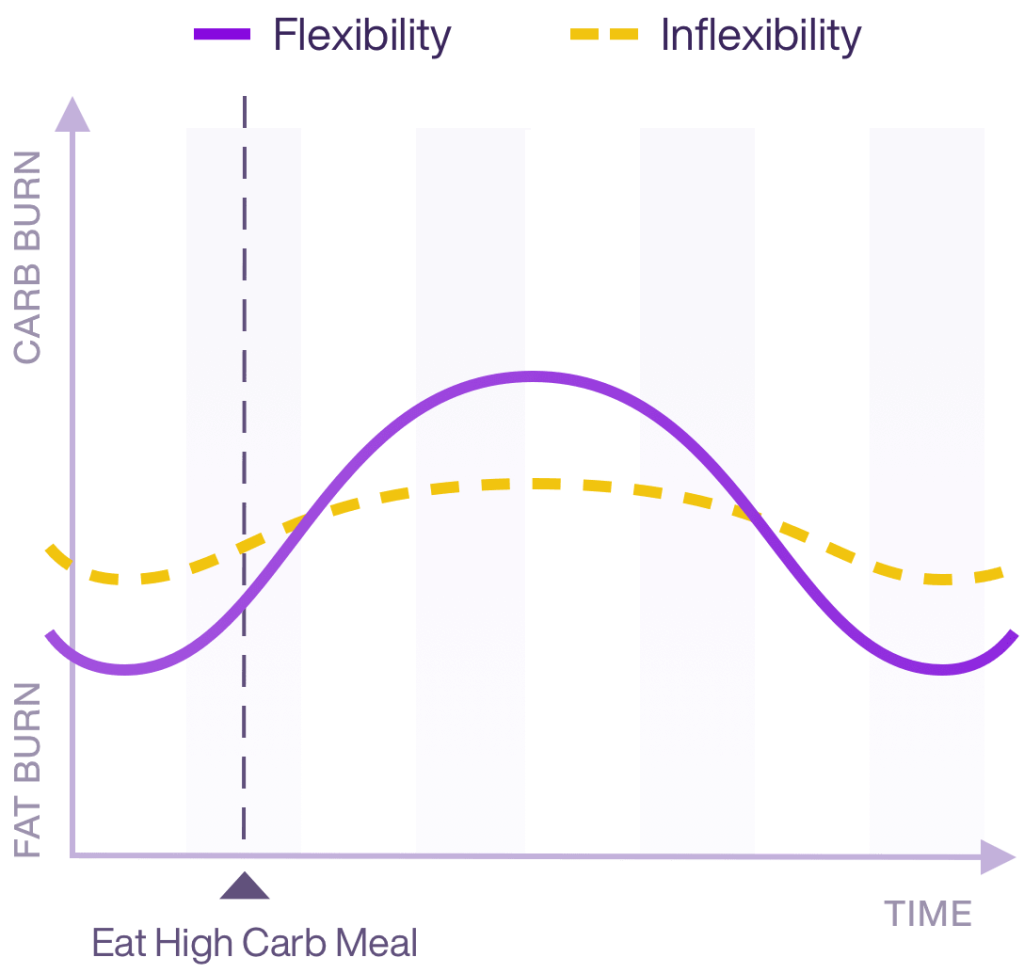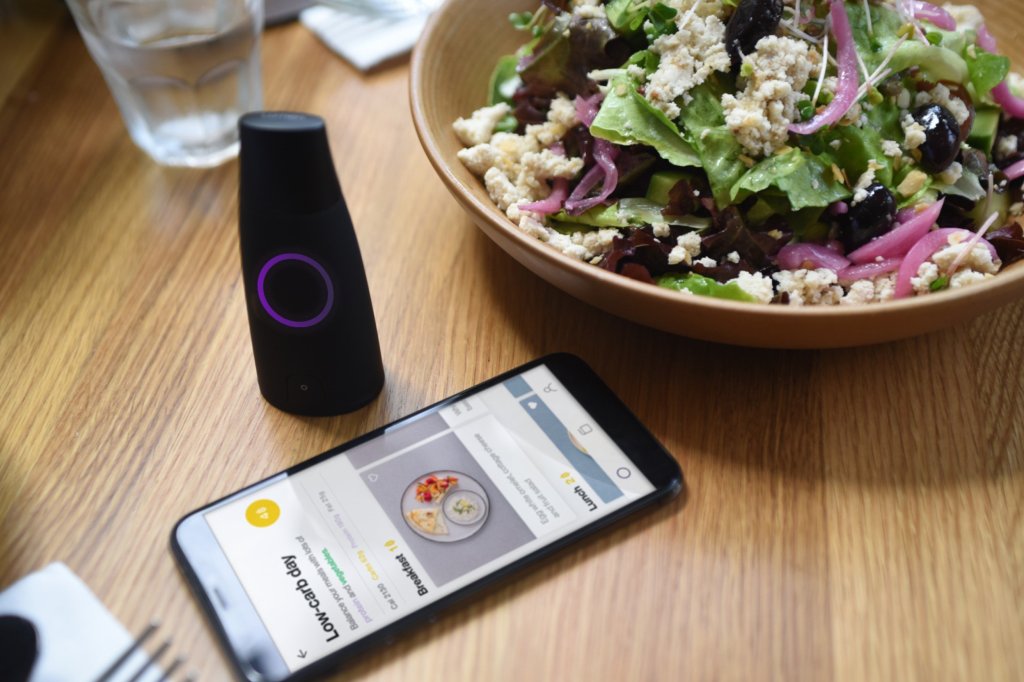Does it feel like our generation is having more intense perimenopause symptoms, stubborn weight gain, the worst sleep out of any women who came before us, and the most full medicine cabinet of prescriptions and supplements you’ve ever seen?

Fortunately, technology has evolved since we watched our mothers go through “the change”, and we are now able to get a much bigger picture of what is happening inside of our body. The insights that blood tests, DNA tests, sleep machines, continuous glucose monitors, bioenergetic harmonization scanners, and metabolism trackers give us the power to make better choices with our nutrition, ways to optimize a workout, target deficiencies with supplements, and so many more “biohacks”, if you will.
The question is, why are we still looking for a magic pill? Good things take time. If you want it, you have to feel it in your body. When you really get to know what is happening with your hormones, the way food affects your body, and experiment with different timing of meals, then it will all make sense. Be open to the insights and be willing to change. BE the change. Are you willing to cook? Meal plan? STICK to your plan? Are you willing to track your metrics so you can watch your progress? Will you schedule in a week’s worth of workouts? Perfect. That is what it will take.
Here, we tap into some holistic ways to revitalize your metabolism.

What even IS metabolism?
Metabolism is a crucial process that influences how our bodies convert food and beverages into energy. As we age, especially for women over 40, it’s common to notice changes in metabolism. This essential bodily function can impact weight management, energy levels, and overall well-being. Understanding metabolism and how it evolves with age is important for maintaining a healthy and balanced lifestyle.

Is slow metabolism a real thing?
There is a common belief that metabolism slows down as people age, especially for women over 40. While it is true that metabolism tends to decrease with age due to loss of muscle mass and hormonal changes, it is important to note that this is not a universal truth for everyone. Factors such as genetics, a history of yo-yo dieting, physical activity, and overall health play a significant role in determining an individual’s metabolic rate. Some women may experience a slower metabolism as they age, but it is not solely determined by their age and gender.
How do I fix it?
For women over 40 who are concerned about their metabolism, focusing on strength training and maintaining a healthy, balanced diet can help mitigate the effects of age-related metabolic changes. Additionally, staying hydrated and getting enough sleep are also important for supporting a healthy metabolism. While age and hormonal changes can influence metabolism, it is not accurate to label it as a definitive reality for all women over 40, as individual lifestyle choices, underlying health conditions, and habits also play a crucial role in metabolic rate.
Here are our practical suggestions for giving your metabolism a kick in the pants, aka a reboot:
“As our metabolism is slowing down, we may become more resistant to certain fuel sources.”
Work on your metabolic flexibility
This isn’t the kind of flexibility you need to do some yoga poses. Metabolic flexibility refers to the body’s ability to efficiently switch between using different energy, such as carbohydrates, fats, and ketones. This flexibility is important for overall health, weight management, and energy levels. For women over 40, maintaining good metabolic flexibility is especially crucial because as our metabolism is slowing down, we may become more resistant to certain fuel sources (ahem, carbs), leading to unwanted, stubborn weight gain.
A good way to measure your metabolism to see what fuel source you are using is to monitor it with a tracker. Get insights at any given moment to help you determine what will make up your next meal or what kind of workout your body can tolerate next.

Exercise, but not harder or more intensely
Good news! You don’t have to work out more, longer, or harder. In fact, there is a simple calculation you can do to see where your heart rate should be in order to be in your fat-burning zone. Take your age and subtract it from 220. Multiply that answer by 0.70. What you get is the heart rate you will want to stay at for 30 minutes throughout the day. A little here and a little there all add up! We use a Fitbit to track heart rate and minutes in the “zone”, but an Apple Watch is a good one, as well.
Once you determine what that heart rate should be, play around with different exercises to see what you need to do to get there. Here’s a hint: it won’t be the vigorous spin class, hike up a mountain, or half marathon 🙂
One easy thing you can do for your metabolism is to head straight out for a short walk after dinner. Even 10 minutes of walking can do wonders for your post-meal insulin levels and aid in digestion.
Eat differently, not less
So many of us are experiencing the same diet trauma. If you are reading this, it is safe to say that you can relate because we are from the same generation. The fat-free 80’s, sugar substitute 90’s, the stunning but rail thin models in the best George Michael video that all of us teenagers wanted to look like. Then, every diet under the sun emerged and we tried them all because we watched our moms try them all. But still today, decades later, we find ourselves on a hamster wheel of chasing weight loss. We still skip meals and restrict calories so much that we’re miserable.
We are here to tell you that your metabolism actually loves food, especially 3 meals a day at the same times each day. Routine, routine, routine is what is going to keep our nervous system at peace and our digestion working efficiently.
“You need to maintain a perfect balance depending on what type of fuel you are burning – carbs or fats.”
Nutrition programs that are based on your blood labs, like the only program we use, can tell you exactly what foods to eat in their perfect macronutrient ratios to get your metabolism balanced. We are not fans of counting calories, but we sure love counting macros. Once you have reached your goal, you take what you learned about your eating habits and metabolism and you start implementing new foods to challenge your metabolism. What foods you start experimenting with is where you might need some backup because you need to maintain a perfect balance depending on what type of fuel you are burning – carbs or fats. Again, we can’t say this enough, this is where a metabolism tracker becomes your back pocket nutritionist.


If you are not on a nutrition program and want to navigate your diet on your own, or you are post-program and maintaining your results, you need to make sure you are getting in enough protein. Metabolism needs adequate protein and, as you lose weight, building muscle is what is going to keep your metabolism fired up. If you use our fave metabolism tracker, you will get nutrition recommendations based on your daily metabolic flexibility. Most women do not eat enough protein! A bit of healthy fat and non-starchy vegetables are always a safe bet when building a balanced meal. However, don’t be afraid of, and do not completely eliminate carbs like bread, pasta, and grains. Once you become metabolically flexible and in tune with how your body is using fuel sources, rotating through high protein and heavier carb days is actually a healthy balance.
Timing of meals matters
Since our metabolism slows down with age, making it more challenging to maintain a healthy weight, paying attention to the timing of meals can help boost metabolism and support weight management. Eating regular meals can help keep metabolism active and prevent energy dips. Having a balanced, heavy-on-the-protein breakfast can kickstart metabolism and satiety, help maintain muscle mass, and maintain a good blood sugar level through the night.

“Weight loss is a science.”
Having an eating window that closes several hours before bed is helpful. Enjoy dinner, even have a glass of wine with it, if you like. But shut ‘er down at 7 if you are heading to bed at 10. Avoiding large meals close to bedtime can prevent unnecessary calorie storage during periods of inactivity.
Between your 3 meals, aim for a 4-5 hour fasting window to allow your insulin levels to come down. It’s important to know that when your insulin is high due to a carb-rich meal, your body will not burn fat. This means you have to quit all snacks and drinks, except water or clear tea or coffee between meals. Have sweets, wine, or your fave latte with your meals.
Skipping meals damages your metabolism. Your nervous system likes routine and, when your body feels safe (knowing it’s going to eat consistently and not skip meals), it releases weight. When you skip meals or restrict calories too much or too often, your body starts to store every meal you eat for a rainy day, especially the higher carb ones.

Sounds simple, but you really do have to drink enough water
Drinking water can boost metabolism in several ways. First, it helps with the process of thermogenesis, which is the body’s way of generating heat and energy from the digestion of food. When you drink cold water, your body needs to work to warm it up to body temperature, which can slightly increase your metabolic rate. Additionally, staying hydrated is important for overall metabolic function. When you are dehydrated, your metabolism may slow down. Finally, drinking water can also help you feel full, leading to reduced calorie intake, which can support weight management and a healthy metabolism.
Above almost everything else, you have to sleep well
It might be hard to believe that sleep and metabolism are related, but they are. When we don’t get enough sleep, it can disrupt our body’s hormonal balance, leading to changes in appetite and metabolism. Specifically, insufficient sleep can lower the levels of leptin (a hormone that suppresses appetite) and increase the levels of ghrelin (a hormone that stimulates appetite), leading to overeating and weight gain. Additionally, poor sleep can also affect our body’s ability to regulate blood sugar levels and can lead to insulin resistance, which can contribute to the development of type 2 diabetes. Therefore, getting adequate and quality sleep is crucial for maintaining a healthy metabolism and overall well-being.
Key takeaways – Your daily checklist
- Test your metabolism (fuel source) upon waking to see if your body will do better on a low carb or high carb day. Why guess and chase your tail when you have real-time metrics at your fingertips?
- Plan your workout. Perhaps it’s fasted, before breakfast, to burn off any leftover carbs. If fat burning is your goal, stay within the target heart rate for fat burning
- Measure out your water for the day and make sure you get it in!
- Make it a priority to move all day. Just because you got that workout in doesn’t mean you can stay sedentary for the rest of the day
- Get your meals in at the same time each day as your body expects them, with a 5 hour fasting window between each. Use your tracker to follow the appropriate macro ratios so you can maintain your metabolic flexibility
- Stop eating 3 hours before bed and go for a short walk after your last meal
- Do everything you can to prepare for a 7-8 hour sleep to set yourself up for a better tomorrow









Leave a comment